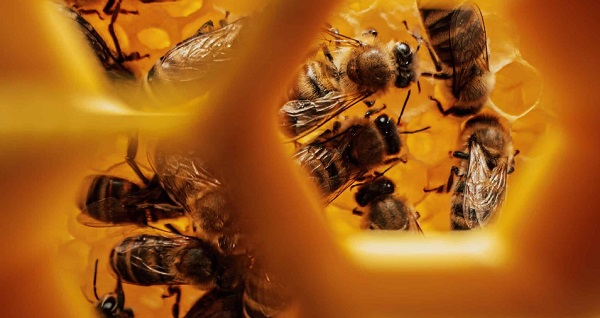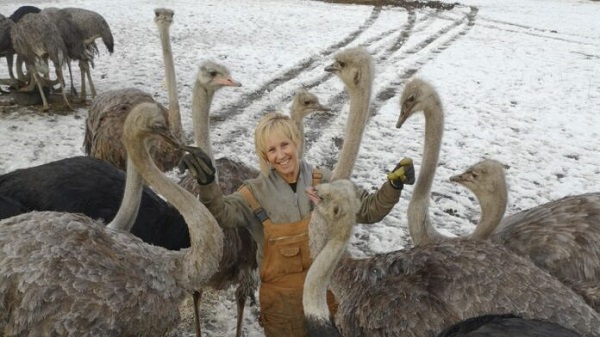Watch Valour’s Amazing Story
The large, male horse runs with vigor when called for breakfast. Valour lives at an equine-facilitated healing ranch northwest of Edmonton where he doesn’t have to worry about food. When the human clients arrive at Infiniti Trails 4 Healing, Valour and the other horses on the ranch offer their soothing equine talents to help people relax and move energy around their bodies. It is a stress-free life for a horse that has endured his share of distress.
There was a time not too long ago when Valour could never count on his next meal. The Alberta SPCA was called out to a property in April of 2018 because neighbours had discovered skinny horses tucked away on a winter pasture far from the eyes of passersby. One horse was already dead and the others were in poor shape. Valour was one of those horses.

“The first time I saw him, he walked up to me and put his head in my chest and he sighed,” says Alberta SPCA Peace Officer Karen Stevenson, who was the first to see the stallion.

Peace Officer Stevenson found four horses that were still alive, but Valour was in the poorest health. She classified his body condition to be a one out of nine. He was so weak, Stevenson lead him out of the deep snow to conserve his energy.
“I was worried if he went down he wasn’t going to get up,” says Stevenson. “Valour stopped and placed his head on my chest and my heart broke. I knew this horse would probably die.”
The Peace Officer immediately started formulating a plan to get the horses out of the situation, but it takes a team of people and the right equipment to load and transport horses, and she didn’t have that with her. Stevenson had to hope Valour could survive one more night on his own.
“I took a minute and rubbed his head and he sighed,” recalls Stevenson. “I told him, ‘Fight like you have never fought before. Give me one more night, I will be back tomorrow with a lot of good people who are going to get you out of this nightmare’.”
Stevenson then started walking back to her truck. As she did, she looked back at the horse who was clearly heartbroken to see his new friend leaving.
“When I turned back, Valour was looking at me for a while and then he just dropped his head as if he was going to give up,” Stevenson explains. “In my five years with the Alberta SPCA, this was the hardest time I’ve ever had walking away from animals.”

Valour Taken Into Protective Custody
A team from the Alberta SPCA arrived at the property the next morning to seize the horses and get them help. However, Stevenson’s heart sank when she first arrived and couldn’t find Valour. She was convinced he hadn’t made it through the night.
“I walked the field and then I saw the saddest picture ever,” says Stevenson. “He was standing in the willows trying to eat twigs and dry leaves.”
The next challenge was figuring out a way to get the horses into the trailer as the team did not know if they were halter broken. However, all it took was a pail of grain and a whistle and the horses came stampeding over.
“I had to run through the snow. I thought they were going to run me over. I have never seen horses so hungry.”
The four horses were transported to an equine veterinarian to begin the road to recovery. For Valour, however, the prognosis was still very dire. The paint horse was in rough shape.




“They went right to the feed and it was four of them,” explains Dr. Melissa Hittinger, a veterinarian contracted by the Alberta SPCA. “But by that afternoon [Valour] went down and he stayed down for over a month, on and off.”
In the process, Valour developed extensive rub sores all over his body, and he was losing hair. Often in situations like this, horses are euthanized, but Valour seemed to have a fighting spirit. The medical team attached a harness to the stallion and would lift him back to his feet, hoping that he just needed a little time to regain his strength.
“In our experience with them, once they are down, they are done,” explains Dr. Hittinger, referring to horses that go down. “With him [though] it was like, ‘Oh, thanks, I needed that,’ and then he just tootled off.”
There were a few times it seemed Valour would not recover. But each time the team contemplated euthanasia, they would find Valour on his feet. He was not willing to give up, so neither were they.
And slowly, Valour started to regain all the muscle he had lost. Slowly, the weight went back on. Slowly, the strength of a stallion came back and the personality of a vibrant horse emerged.



Valour Heads To New Home
Valour’s impressive recovery meant that he was now ready to move to a permanent home. The decision was made to send him to Michele Keehn to use at her equine-facilitated healing ranch. The horse who embraced the help of so many people was now ready to start paying it forward.
“He’s very aware. He’s… always watching what’s going on,” says Keehn. “He’s very vibrant and strong, curious, but very sure. He’s got this sureness about himself, this confidence.”


On this day, Valour has a special visitor. Peace Officer Karen Stevenson has come to see the horse she rescued, and the environment he now lives in. She is fighting back tears as she sees a horse that is very different than the one she feared would not survive the night one year earlier.

Emotional Reunion
As Stevenson walks out of the barn, she slowly walks up to Valour and puts her arms around his neck. She whispers to him, “Hi buddy. I told you I would get you better. I told you to fight hard and that we would get you a better life. You did so good, you did so good. You did it.”
This is a surreal moment for the veteran Peace Officer. She rarely gets to see the animals she saves once they have arrived at the caretaking facility. Most animals are gifted to organizations that find new homes for them and Alberta SPCA Peace Officers are not a part of that process. Stevenson is soaking up this opportunity to see how much her efforts make a difference.

“They survived a horrible, horrible situation. They survived on nothing; on twigs and leaves.”
“They survived a horrible, horrible situation. They survived on nothing; on twigs and leaves,” recalls Stevenson.
And while this moment is both emotional and rewarding, Stevenson is quick to deflect the accolades.
“It wasn’t just me, it was everybody [at the Alberta SPCA],” Stevenson says. “It was everybody who comes to work every day. It was everybody who puts in hours and hears sad stories and just works tirelessly to get this result.”
On this day, Valour appears proud to be showing off his new home. At one point, he lies down and rolls in the dirt, and then quickly pops back up. It’s a bold reminder of how far Valour has come, from a horse so thin and weak he could not stand, to a horse that jumps to his feet with ease.

He seems to be soaking up the attention. And Stevenson is enjoying watching him live his best life.
“I can guarantee you that every peace officer who starts their day tries to make stories like this happen,” says Stevenson.
And she whispers to Valour, “Enjoy it buddy, you deserve this. You fought so long and hard. Enjoy it.”
It’s clear Valour has every intention of doing just that.
Before & After






















